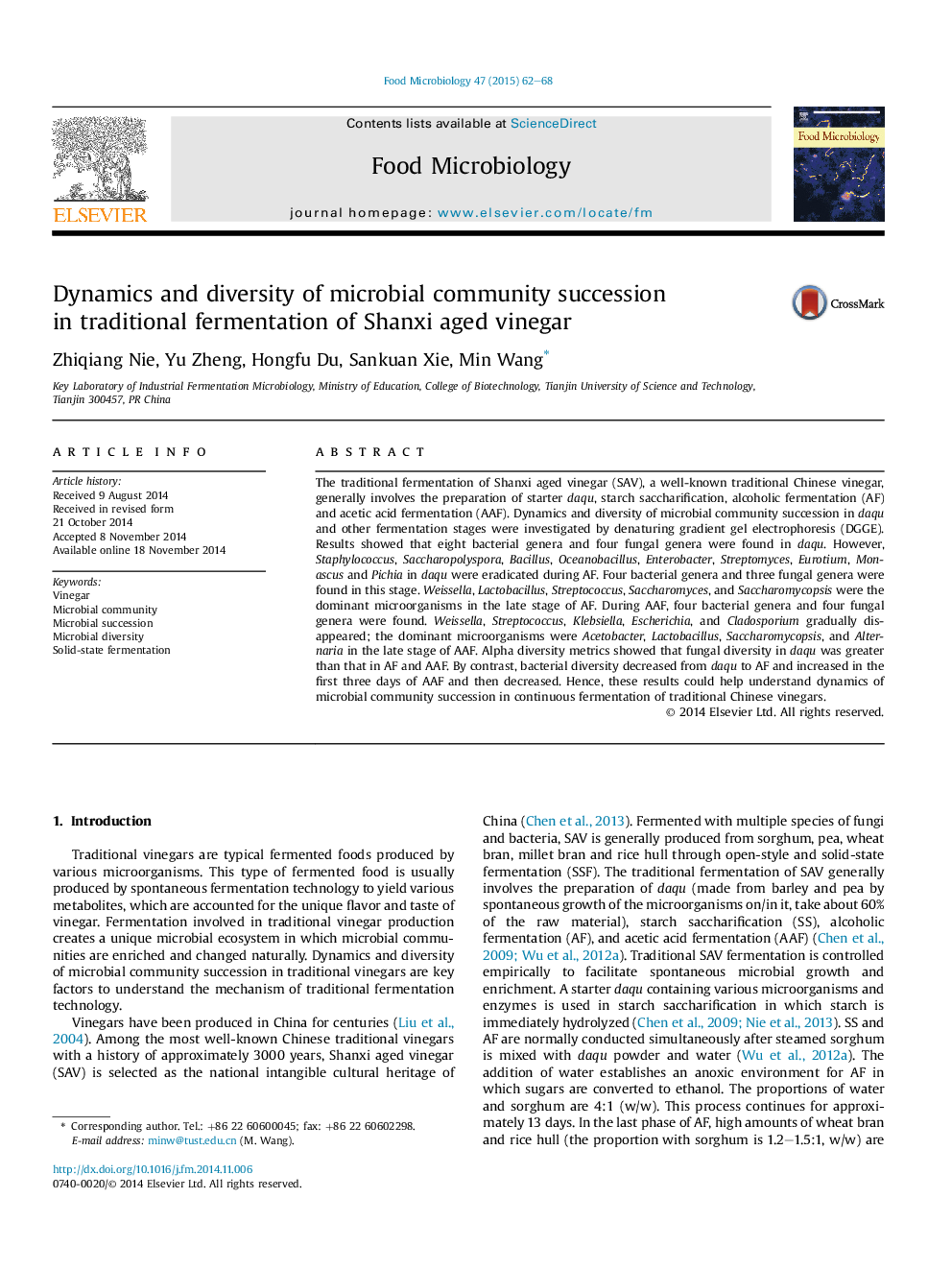| Article ID | Journal | Published Year | Pages | File Type |
|---|---|---|---|---|
| 4362850 | Food Microbiology | 2015 | 7 Pages |
•Microbial community succession in Shanxi aged vinegar was investigated by PCR-DGGE.•Fungal and bacterial diversities in daqu were greater than those in alcoholic and acetic acid fermentation.•Bacterial diversity increased in the first three days of acetic acid fermentation and then decreased.
The traditional fermentation of Shanxi aged vinegar (SAV), a well-known traditional Chinese vinegar, generally involves the preparation of starter daqu, starch saccharification, alcoholic fermentation (AF) and acetic acid fermentation (AAF). Dynamics and diversity of microbial community succession in daqu and other fermentation stages were investigated by denaturing gradient gel electrophoresis (DGGE). Results showed that eight bacterial genera and four fungal genera were found in daqu. However, Staphylococcus, Saccharopolyspora, Bacillus, Oceanobacillus, Enterobacter, Streptomyces, Eurotium, Monascus and Pichia in daqu were eradicated during AF. Four bacterial genera and three fungal genera were found in this stage. Weissella, Lactobacillus, Streptococcus, Saccharomyces, and Saccharomycopsis were the dominant microorganisms in the late stage of AF. During AAF, four bacterial genera and four fungal genera were found. Weissella, Streptococcus, Klebsiella, Escherichia, and Cladosporium gradually disappeared; the dominant microorganisms were Acetobacter, Lactobacillus, Saccharomycopsis, and Alternaria in the late stage of AAF. Alpha diversity metrics showed that fungal diversity in daqu was greater than that in AF and AAF. By contrast, bacterial diversity decreased from daqu to AF and increased in the first three days of AAF and then decreased. Hence, these results could help understand dynamics of microbial community succession in continuous fermentation of traditional Chinese vinegars.
